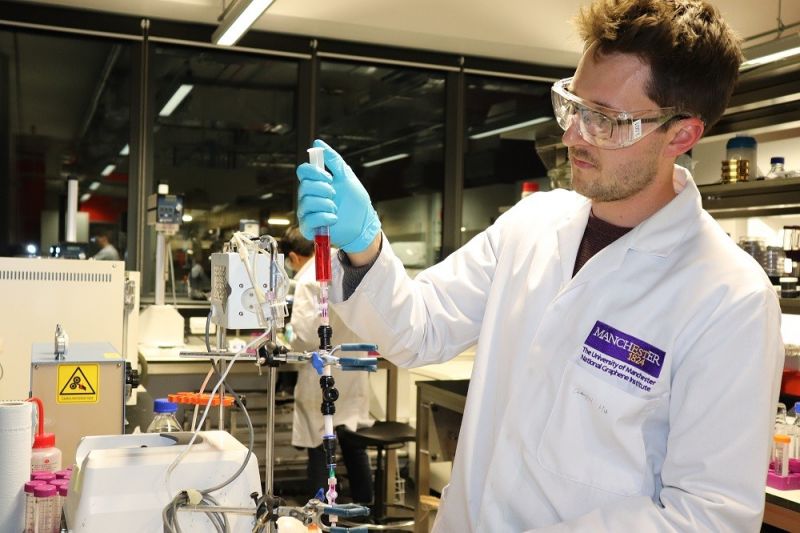National Graphene Institute to Develop Graphene Water Filtration with LifeSaver
Published on by Water Network Research, Official research team of The Water Network in Academic
The National Graphene Institute (NGI) at The University of Manchester has signed an 18-month research project with LifeSaver®, a UK-based manufacturer of portable and reusable water filtration systems.

Image Source: The University of Manchester
The 18-month research project will focus on developing graphene technology that can be used for enhanced water filtration, with the goal of creating a proprietary and patented, cutting-edge product capable of eliminating an even wider range of hazardous contaminants than currently removed by its existing high performance ultra-filtration process.
Graphene has emerged as a material with fantastic potential for water filtration and desalination in recent years, with researchers on graphene membranes at the NGI leading the way. Graphene was the first two-dimensional material ever discovered, it is also one of the strongest known natural materials in the world, while retaining high levels of flexibility, conductivity and filtration. By incorporating graphene into its existing market leading water purification technology, LifeSaver hopes to reduce the sieve size of its hollow fiber filtration membrane from the current 15 nanometers (which effectively removes bacteria, microbial cysts and viruses) to about 1-3 nanometers. At that size, LifeSaver products could remove a much wider range of contaminants, such as heavy metals, pesticides, certain chemicals and potentially even nuclear radiation, from drinking water supplies.
Making a graphene-based portable water filter was our dream, and this collaboration with LifeSaver will enable that dream to be a reality sooner than later,” says Professor Rahul Nair, who will lead the project at The University of Manchester.
“The University of Manchester is the world leading centre for graphene membrane development, and LifeSaver has the expertise in making a portable water filter. This is a great example of a collaborative project where we are trying to combine two independently developed technologies into one, to enhance the quality and availability of drinking water for those who need it most.”
“The partnership with NGI excites all of us at LifeSaver as it provides a potential game changing opportunity in our patented technology platform,” says Chris Marsden, Chairman at LifeSaver.
“This in turn allows us to continue to provide leading edge technological solutions to our key global humanitarian and retail markets.”
When LifeSaver approached the NGI in 2017, they were seen as a strong to partner with relevant experience to develop and apply potential graphene applications in water filtration. The team at NGI, which is the UK’s national centre for graphene and two-dimensional materials research, seized the opportunity, and a promising partnership was born.
Founded in the UK in 2007, LifeSaver came to life following back-to-back natural disasters: the Indian Ocean Tsunami and Hurricane Katrina to address the resulting need for access to clean drinking water. The first LifeSaver prototype was developed and became the world’s first portable water filter capable of removing the smallest known waterborne viruses. Since that time, LifeSaver has established itself as an effective and long-lasting solution to drinking water issues in the humanitarian sectors, and outdoor enthusiasts.
The University of Manchester is the home of graphene, a material that has captured the imagination of the world. Graphene@Manchester is an ongoing program of activity to ensure that Manchester and the UK play a leading international role in developing the revolutionary potential of graphene. At the heart of Graphene@Manchester is the National Graphene Institute and the Graphene Engineering Innovation Centre (GEIC), multi-million-pound facilities with a commitment to fostering strong industry-academic collaborations.
Source: The University of Manchester
Media
Taxonomy
- Treatment
- Ultrafiltration
- Decontamination
- Water Reuse & Recycling
- Purification
- Portable
- Filtration
- Decontamination
- Filtration Solutions
- Industrial Water Reuse
- Filtration
- Membrane Filtration
- Filtration
- Graphene